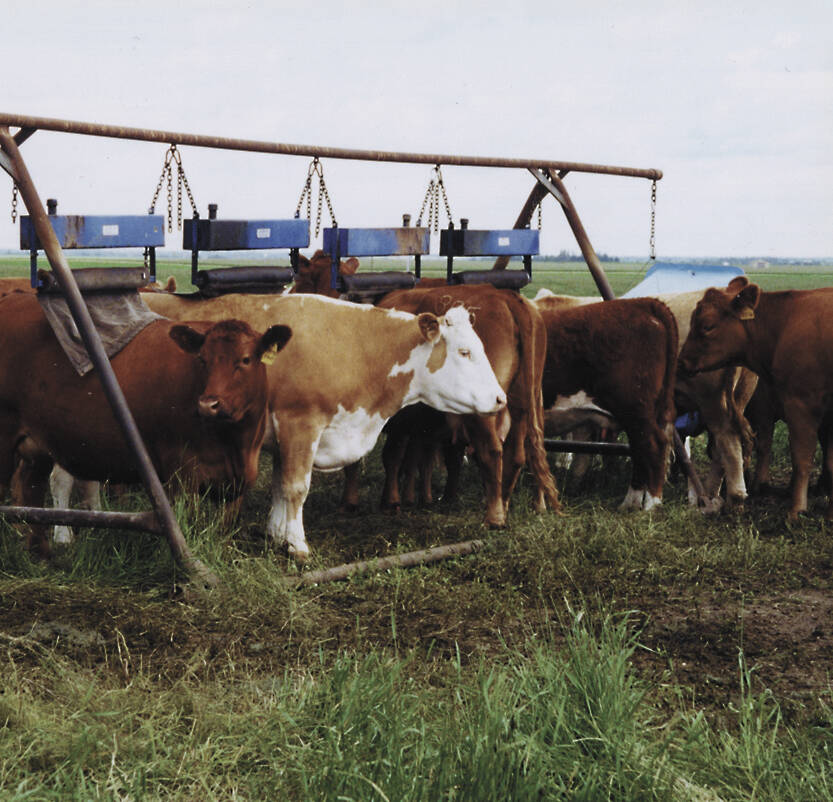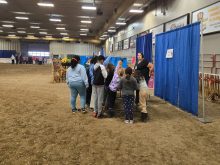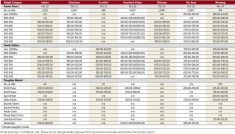Since bulls are half the genetic value of your herd, they are definitely worth looking after. There are various steps and management procedures which will give your bulls more longevity and make them more productive. If you can get more years and/or more cows bred from these top genetic bulls it will benefit you greatly, as superior bulls will improve the growth and value of your calf crop.
In the breeding season, stocking density or the bull-to-cow ratio will vary greatly depending on several factors. The younger yearlings need to be run with 15 or so cows to make sure they are capable. This won’t burn them out but allows them to grow so they can be used much heavier as two-year-olds. Then depending on terrain, size and quality of pasture, ability of the bull to walk and whether some cows were AIed previously, these factors will determine handling capacity of your bull.
Read Also

Shifting standards on cattle parasite control
Parasite product resistance has more farmers and veterinarians thinking differently about how to control issues like lice or worms.
Every bull must be evaluated yearly then for his probable serving capacity. The results of the semen evaluation and scrotal size will also provide valuable information to help make your decision.
It has been said that if a cow is serviced by two bulls, you are running too many bulls or too few cows. The two bulls serving the cows mean they are in close proximity and the worry is fighting and injuring each other. Bulls are especially vulnerable at damaging their penis when mounting and breeding.
In my opinion, using bulls of as varied ages as possible with multiple-sire groups will keep fighting to a minimum and the young yearling bulls will start by breeding cows on the periphery of the herd. The huge size difference between yearlings, two-year-olds and mature bulls generally keeps fighting to a minimum as the pecking order is quite obvious.
Multiple-sire herds have the advantage if one bull goes down for any reason the others can pull up the slack. The disadvantage is if the dominant bull has poor semen he may prevent the others from breeding and conception rate is hindered. The opposite side of this is the single-sire herds, which many purebred breeders use. If that bull develops a problem such as a cut penis or his testicles degenerate and it goes undetected for any length of time, the resulting open cow percentage can be very high. I know of several cases where bulls had scarred-down penises from previous cuts and were not semen tested prior to breeding season. The result was a 100 per cent open rate. These outcomes we all want to avoid.
For cleanup, even purebred herds can run bulls together and then parentage test the offspring to determine the exact sire for registration. These days with DNA testing that is a very easy thing to do. Some commercial breeders are even parentage testing the calves to help determine which bulls truly do produce the most vigorous and productive calves. Calving ease also can be highlighted once parentage is known by looking at last year’s calving records.
Keep fevers down
A bit of a misnomer that circulates about breeding bulls is that treatment with antibiotics damages the sperm. It really is the severity of the ailment coupled with an increased temperature which damages sperm. The quicker you treat an ailment and keep a fever from developing the better.
Ancillary products like steroids have been proven to be detrimental especially in long-term use so avoid these if possible and any drastic treatment should be overseen by your herd veterinarian.
When checking bulls at pasture they should always be with the cows otherwise something is wrong. Always look at the prepuce area for signs of swelling, which indicates a problem.
Any lameness can scuttle breeding performance. Be especially vigilant of the feet and legs before breeding season and have any trimming done. Some clinics recommend foot rot vaccination for the breeding bulls. Any lameness you can avoid by these two preventive measures will go a long way to avoiding downtime during the breeding season. The three biggest causes of breeding days missed is injury from fighting, penile injuries and lameness not necessarily in that order.
The off season
Managing the bulls during the “off season” also deserves some attention. The bigger the area to house bulls when not breeding the better. More room means less fighting and more exercise, keeping bulls fitter and their feet healthier. If away from cows they will be quieter and fight less.
Bulls need a good forage diet at two per cent body weight daily. There is a tendency to provide grain which in many instances gets bulls too fat. If too fat they are not fit, lack any stamina and the fat in the scrotum insulates the testicles resulting in poor temperature regulation and poor-quality sperm. Overfit bulls need to lose weight before getting fit to breed. This is why many show champions are poor breeders early in the breeding season.
Overwintered bulls need some areas of protection from wind chills such as bush or even a portable porosity fence. We always see some evidence of wind chill in the spring with herd sires having badly frozen testicles. This can result in permanent sterility.
It is worthwhile protecting your investment. Standard mineral supplementation is required as bulls need vitamin A for instance for optimal semen production.
Give all the shots you do to the cow herd with the exception of scours vaccinations. An ideal time is at semen checking when the bull is restrained and this is just prior to the breeding season when protection for the cows is paramount. Also a pour-on endectocide for internal and external parasites should be mandatory. Bulls will always have a higher proportion of horn and face flies so treatment at turnout for breeding with a product like Cylence is probably a good idea as well.
When purchasing breeding bulls check into the health program they are on as tests for a BVD carrier if vaccination history is sketchy may be advisable and if hardware disease is a problem on your farm a rumen magnet may be indicated.
Start with virgin bulls from purebred breeders. This greatly improves your genetic gain and avoids bringing in venereal diseases like trichomoniasis. Avoid used or rental bulls for that very reason. After that, a little care goes a long way to keeping and maintaining useful functional bulls to improve your genetic base.















